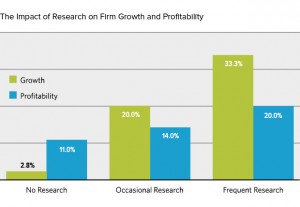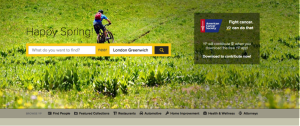— October 16, 2017

Pexels / Pixabay
“What’s for dinner?” It’s the simple question that begins American author Michael Pollan’s famed book, “The Omnivore’s Dilemma,” and a seemingly simple one at that. However, things get a bit more complicated when he starts to explore the relationship between food and society. Pollan follows each of the food chains that sustain us, from the source to a final meal, uncovering all the inner-workings of the typical American diet.
During his journey, Pollan visits Joel Salatin at Polyface Farms, who considers himself a grass farmer. His argument is that each part of the farm directly helps the others – the sun feeds the grass, the grass feeds the cows, the larvae in the cow manure feeds the chickens and the chicken feeds the grass again. It’s all a cycle and the grass is his core asset. And while he notes that he needs to make money on the livestock today, he also wants to ensure a better tomorrow.
So, what does this have to do with marketing? When you think about it, Joel’s grass farmer theory isn’t so different from a healthy email strategy. Think about the livestock on the farm as the end-product. If you don’t take care of the grass that feeds the animals, your product suffers and people don’t want to buy it. Marketers should think of themselves as engagement farmers – and your customer is the grass.
Let’s start with the email list. When a customer signs up and gives you their email address, you’re given the privilege to send them messages until they say no more and unsubscribe. With that privilege comes responsibility – and it’s yours to not just push product, but to manage your list and nurture your customer relationships. The end goal for brands is to sell, and sell more, but that’s impossible to do if customers are not engaged. In other words, your farm might as well be baron – try selling cows then.
To understand the significance of a healthy email list, just look at Samsonite’s recent acquisition of eBags. The company cited email as one of the strongest communication channels with its customers, and the place where they see the most interaction on a daily basis. They have invested in email marketing tactics such as creating highly personalized content based on customer data and a host of successful promotional and win-back campaigns. Additionally, eBags has data on 250,000 customers and one million My eBags loyalty program members, according to Chain Store Age.
So, to bring it back to the farm, it’s not just the company’s products or online presence that Samsonite is getting, but the customers – or grass – that keeps it thriving. eBags’ customer database, which includes email addresses, demographic information, past purchasing behavior and individual preferences, is hugely valuable, as it arms Samsonite with what it needs to deliver a relevant, engaging experience to its customers.
Not every brand is in the position to acquire another company for their email list, but fortunately there are several other ways to start cultivating your ‘engagement farm’ to strengthen your email strategy and start reaping the benefits.
For example, by tailoring the email content to include a variety of product offerings suited to different types of customers and harvesting insights about their preferences to further segment their email strategy, marketers can begin to deliver more relevant content that lifts not only engagement rates, but long-term customer loyalty and revenue. The more balanced the email content diet is, the ‘healthier’ your customers will be, and the longer they’ll last, so take time to understand their unique preferences and needs.
Here’s how it works: rather than pushing a particular product, offer the customer themes that support similar products. This way, you can discover items that customers might like, but haven’t purchased yet. The best part is that the benefits of proper theme selection are two-fold: in the process of offering something new and different to the customer, marketers can expose more of the brand’s catalog, while also evolving with every customer’s tastes.
So, how do you gauge whether the above tactics are working? This is where test sends, or testing an email on a small group of customers, come in. This allows marketers to adjust campaigns based on engagement rates so they can understand what’s truly resonating with customers. This ensures that emails are reaching the right people at the right time with content most relevant to them. By continually testing, measuring and fine-tuning, marketers can make sure their email list is always happy and that the grass isn’t the only green they’re seeing.
So, when building the most impactful email marketing strategy, take a page of our Michael Pollan’s book and look beyond the end-product to start with your core asset – your customers.
Digital & Social Articles on Business 2 Community
(73)
Report Post







